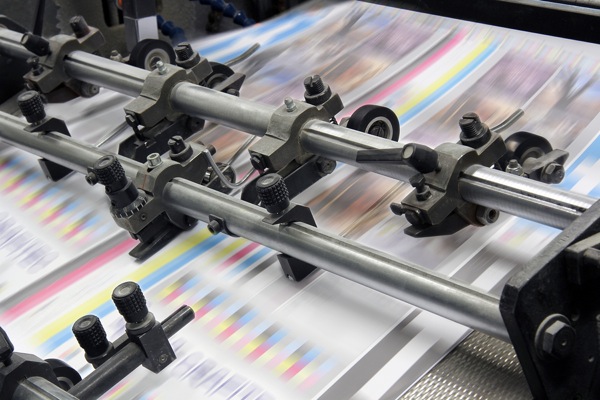Some traditionally digital based companies have even started to see the benefits of producing printed magazines or content rich brochures to market their brand (more about that later). Of course this doesn’t say anything about print’s efficacy as a marketing medium when compared to digital. The results were unequivocal in presenting the power of printed materials over digital in this area, with 56% of consumers surveyed citing mailed materials as the chief source of information used to make purchasing decisions (some 20% higher than the nearest digital influencer). Creating print and digital cross pollination None of the surveys I’ve cited should be reason to abandon your digital marketing strategy of course; just as evidence showing the efficacy of digital shouldn’t be reason to reign in your print marketing budget. With consumers scanning the codes or entering the URLs on their smartphones at the same time they are consuming the printed material, not only can you drive traffic to your online campaigns but you can track cross pollination and harvest some interesting data on your users, such as when and where they are interacting with your printed material. An effective use of variable printing could be using it in conjunction with a social media campaign in which you encourage subscribers to sign up for free goodies and, on occasion, marketing materials. You can then target your printed marketing around certain interest groups by harvesting data from Facebook or Twitter. Leverage social media Social media remains the single most effective digital tool for reaching a lot of people in a short period of time. By incorporating CTAs into your printed materials that encourage consumers to visit your social media page or website for more info or maybe the prospect of exclusive offers, you can use your printed materials to drive more traffic online. Digital brands leveraging print As I’ve mentioned, magazines are being seen by some digitally based companies as the perfect medium for content marketing, despite the increased costs associated with production.

But rest assured – print is not dead.
Inevitably, the medium has had to move over to make room for the explosive rise of digital, but it’s far from becoming a niche format. Some traditionally digital based companies have even started to see the benefits of producing printed magazines or content rich brochures to market their brand (more about that later).
As Content Marketing Institute founder Joe Pulizzi stated as far back as 2012, print may have become the new ‘non traditional’ marketing strategy; for content marketers at least.
In this article I want to explore how print should still have pride of place in any marketing drive and how it can actually work in unison with digital platforms in the marketing mix through cross pollination.
We’ll begin though by looking at some rather revealing statistics.
Print marketing statistics
According to the CMI’s annual report in 2015 the top three paid advertising methods in the B2B sphere in North America were Search Engine Marketing at 66%, Print or Other Offline Promotion at 57% and Traditional Online Banner Ads at 55%.1 This single stat alone should make it clear that the bottom has definitely not fallen out of print advertising in financial terms.
Of course this doesn’t say anything about print’s efficacy as a marketing medium when compared to digital. There are a couple of interesting studies that do however.
The first is a survey conducted by Nielson in 2014 looking into the retail sector and how US consumers arrive at purchasing decisions. The results were unequivocal in presenting the power of printed materials over digital in this area, with 56% of consumers surveyed citing mailed materials as the chief source of information used to make purchasing decisions (some 20% higher than the nearest digital influencer).

Print also has the power to influence B2B end-users, with 45% of those polled in a 2013 ABM survey stating their regular sources of information to obtain business information were magazines. When looking for info on new products or services this rose to 69%. In this second instance, print magazines were just 11% behind websites.
Creating print and digital cross pollination

None of the surveys I’ve cited should be reason to abandon your digital marketing strategy of course; just as evidence showing the efficacy of digital shouldn’t be reason to reign in your print marketing budget. As I have made clear in the past, there are many reasons not to cut back on your print marketing budget, regardless of the attraction and scalability of digital.
Below are a few techniques to help you not only make the most of both approaches, but encourage cross pollination across media, driving and tracking consumers from print to digital and vice versa:
- Use QR codes and personalized URLs to track media crossover
QR codes and personalised URLs are brilliant ways of building bridges between your printed marketing and owned media in the online space. With consumers scanning the codes or entering the URLs on their smartphones at the same time they are consuming the printed material, not only can you drive traffic to your online campaigns but you can track cross pollination and harvest some interesting data on your users, such as when and where they are interacting with your printed material. QR codes in particular allow you to get really creative…

COMMENTS